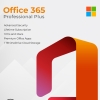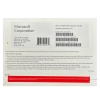Ransomware Prevention and Recovery: Safeguarding Your Digital World
Introduction:
In today’s digital age, the threat of ransomware looms large over individuals and businesses alike. Ransomware attacks have become increasingly sophisticated and devastating, targeting everything from personal photos to critical business data. This blog will serve as your comprehensive guide to ransomware prevention and recovery, equipping you with the knowledge and strategies needed to protect yourself and your digital assets.
Table of Contents:
- Understanding Ransomware
- What is Ransomware?
- How Does Ransomware Work?
- Types of Ransomware
- Ransomware Prevention
- Regular Data Backups
- Keep Software Up-to-Date
- Implement Strong Security Practices
- Educate Employees and Family Members
- Use Reliable Antivirus and Antimalware Solutions
- Be Cautious with Email Attachments and Links
- Ransomware Recovery
- Isolate Infected Systems
- Report the Attack
- Assess the Damage
- Decide Whether to Pay the Ransom
- Decrypting Files (if possible)
- Rebuilding and Restoring Systems
- Building a Ransomware Response Plan
- Establish a Response Team
- Develop Communication Protocols
- Regularly Update the Plan
- Real-Life Case Studies
- Notable Ransomware Attacks
- Lessons Learned from Past Incidents
- Conclusion
Understanding Ransomware:
What is Ransomware? Ransomware is malicious software that encrypts your files, rendering them inaccessible until a ransom is paid to the attackers. It’s essentially a digital kidnapping of your data.
How Does Ransomware Work? Ransomware is often delivered through infected email attachments or malicious links. Once activated, it encrypts your files and displays a ransom note demanding payment in cryptocurrency.
Types of Ransomware
- Encrypting Ransomware: Encrypts files and demands payment for decryption.
- Locker Ransomware: Locks you out of your entire system, making it unusable.
- Scareware: Displays fake threats to scare you into paying.
Ransomware Prevention:
Regular Data Backups Frequent backups ensure you have unaffected copies of your data. Store backups offline or on secure cloud platforms.
Keep Software Up to Date Regularly update your operating system, software, and antivirus programs to patch vulnerabilities.
Implement Strong Security Practices Use complex passwords, enable multi-factor authentication, and limit user privileges.
Educate Employees and Family Members Train them to recognize phishing emails, avoid suspicious downloads, and follow best security practices.
Use Reliable Antivirus and Antimalware Solutions Install reputable security software and keep it updated.
Be Cautious with Email Attachments and Links Don’t open attachments or click on links from unknown sources.
Ransomware Recovery:
Isolate Infected Systems Disconnect infected devices from the network to prevent the ransomware from spreading.
Report the Attack Notify law enforcement agencies and appropriate cybersecurity organizations.
Assess the Damage Determine the scope of the attack and the data affected.
Decide Whether to Pay the Ransom Consult cybersecurity experts before making any decisions. Paying the ransom is risky and not guaranteed to result in data recovery.
Decrypting Files Check if decryption tools are available for the specific ransomware strain.
Rebuilding and Restoring Systems Wipe and rebuild infected systems using clean backups.
Building a Ransomware Response Plan:
Establish a Response Team Designate individuals responsible for responding to and mitigating ransomware incidents.
Develop Communication Protocols Outline how to communicate internally and externally during an attack.
Regularly Update the Plan Ransomware tactics evolve, so keep your response plan current.
Real-Life Case Studies:
Notable Ransomware Attacks Highlight recent high-profile attacks and their impact.
Lessons Learned from Past Incidents Discuss lessons businesses and individuals can learn from past incidents.
Conclusion:
Ransomware is a serious and evolving threat, but armed with knowledge and preparation, you can significantly reduce your risk and minimize the potential impact. By following best practices for prevention, having a solid recovery plan in place, and learning from real-world examples, you can better protect your digital world from the menace of ransomware. Remember, the best defense is a combination of vigilance, education, and proactive measures. Stay informed, stay secure!









